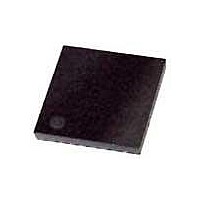ATA5823-PLQW Atmel, ATA5823-PLQW Datasheet - Page 10

ATA5823-PLQW
Manufacturer Part Number
ATA5823-PLQW
Description
RF Transceiver RF DATA CONTROL Duplex Transceiver
Manufacturer
Atmel
Datasheet
1.ATA5824-PLQW.pdf
(98 pages)
Specifications of ATA5823-PLQW
Operating Supply Voltage
2.5 V, 3.3 V
Mounting Style
SMD/SMT
Package / Case
QFN-48 EP
Minimum Operating Temperature
- 40 C
Operating Temperature (min)
-40C
Operating Temperature (max)
105C
Operating Temperature Classification
Industrial
Product Depth (mm)
7mm
Product Height (mm)
0.9mm
Product Length (mm)
7mm
Operating Supply Voltage (typ)
2.5/3.3V
Operating Supply Voltage (max)
3.6V
Lead Free Status / RoHS Status
Lead free / RoHS Compliant
Available stocks
Company
Part Number
Manufacturer
Quantity
Price
Company:
Part Number:
ATA5823-PLQW
Manufacturer:
ATMEL
Quantity:
900
Part Number:
ATA5823-PLQW
Manufacturer:
ATMEL/爱特梅尔
Quantity:
20 000
7. RF Transceiver in Half-duplex Mode
7.1
10
Low-IF Receiver
ATA5823/ATA5824
According to
PA (Power Amplifier), RX/TX switch, fractional-N frequency synthesizer and the signal process-
ing part with mixer, IF filter, IF amplifier with analog RSSI, FSK/ASK demodulator, data filter and
data slicer.
In receive mode the LNA pre-amplifies the received signal which is converted down to 226 kHz
intermediate frequency (IF), filtered and amplified before it is fed into an FSK/ASK demodulator,
data filter and data slicer. The RSSI (Received Signal Strength Indicator) signal and the raw dig-
ital output signal of the demodulator are available at the pins RSSI and on TEST3 (open drain
output). The demodulated data signal Demod_Out is fed into the digital control logic where it is
evaluated and buffered as described in section
In transmit mode the fractional-N frequency synthesizer generates the TX frequency which is fed
into the PA. In ASK mode the PA is modulated by the signal PA_Enable. In FSK mode the PA is
enabled and the signal TX_DATA (FSK) modulates the fractional-N frequency synthesizer. The
frequency deviation is digitally controlled and internally fixed to about ±19.5 kHz (see
on page 30
“Digital Control Logic” on page
mission will only start if the synthesizer is locked.
In half-duplex mode the RX/TX switch can be used to combine the LNA input and the PA output
to a single antenna with a minimum of losses. In full-duplex mode more isolation between
receive and transmit antenna is needed, therefore two antennas have to be used.
Transparent modes without buffering of RX and TX data are also available to allow protocols
and coding schemes other than the internal supported Manchester encoding, like PWM and
pulse position coding.
The receive path consists of a fully integrated low-IF receiver. It fulfills the sensitivity, blocking,
selectivity, supply voltage and supply current specification needed to manufacture an automo-
tive key fob for RKE and PEG systems without the use of a SAW blocking filter (see
on page 6
car when using an additional blocking SAW front-end filter as shown in
At 433.92 MHz the receiver has a typical system noise figure of 6.5 dB, a system I1dBCP of
–
and there is hence no AGC or switching of the LNA needed to achieve a better blocking perfor-
mance. This receiver uses an IF of about 226 kHz (see table “Electrical Characteristics” number
2.10 for exact values), the typical image rejection is 30 dB and the typical 3 dB system band-
width is 220 kHz (f
demodulator needs a signal to noise ratio of 8 dB for 20 Kbit/s Manchester with ±19.5 kHz fre-
quency deviation in FSK mode, thus, the resulting sensitivity at 433.92 MHz is typically
–
Due to the low phase noise and spurious of the synthesizer in receive mode
eighth order integrated IF filter the receiver has a better selectivity and blocking performance
than more complex double superhet receivers, without using external components and without
numerous spurious receiving frequencies.
Note:
30 dBm and a system IIP3 of
105.5 dBm.
1. –120 dBC/Hz at ±1 MHz and –72 dBC at ±f
and
for exact values). The transmit data can also be buffered as described in section
Figure 2-2 on page
Figure 5-1 on page
I F
= 226 kHz ±110 kHz, f
–
35. A lock detector within the synthesizer ensures that the trans-
20 dBm. The signal path is linear for disturbers up to the I1dBCP
5, the RF transceiver consists of an LNA (Low-Noise Amplifier),
8). The receiver can be connected to the roof antenna in the
“Digital Control Logic” on page
lo _ I F
XTO
at 433.92 MHz
= 116 kHz and f
Figure 4-1 on page
h i_ I F
(1)
= 336 kHz). The
35.
together with the
4829D–RKE–06/06
Figure 3-1
Table 9-1
7.















